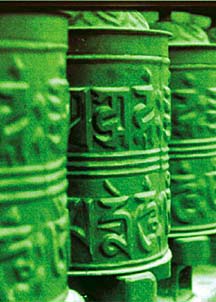The World Of William T. Vollmann
EUROPE CENTRAL William T. Vollmann Viking ($39.95) EXPELLED FROM EDEN A William T. Vollmann Reader Larry McCaffery and Michael Hemmingson, eds. Thunder's Mouth Press ($17.95)

EUROPE CENTRAL William T. Vollmann Viking ($39.95) EXPELLED FROM EDEN A William T. Vollmann Reader Larry McCaffery and Michael Hemmingson, eds. Thunder's Mouth Press ($17.95)
Edmund Blair Bolles Joseph Henry Press ($27.95) by James Ervin Though he continued to work on theoretical physics for decades after completing his general theory
Chloé E. Atreya Festina Lente Press ($25) by Jaye Beldo Complex Adaptive Systems (cas) describe the myriad non-linear connections and interdependencies of everything from ecosystems,
Ron Silliman Salt Publishing ($14.99) by Mark Tursi Early in Under Albany, Ron Silliman suggests that he has “spent 17 of the last 24 years actively
W.G. Sebald Random House ($24.95) by Eric J. Iannelli “…one never knows how to classify his books. All that is obvious is that their structure
by Linda Lappin Along a busy stretch of highway north of Rome, near the town of Viterbo, a solitary tower thrusts up among the trees
by Steven Lee Beeber Those who've long suspected Lou Reed might be overstating his importance to the Velvet Underground have two new pieces of evidence
by Leonard Schwartz Australian poet John Tranter is the author of many books of poetry including Parallax, The Alphabet Murders, Late Night Radio, Borrowed Voices, and most recently Studio

William Corbett, John Tranter, John Cale, Pier Paolo Pasolini and more... INTERVIEWS The Romance of Life and Art: An Interview with William Corbett Interviewed by Thomas